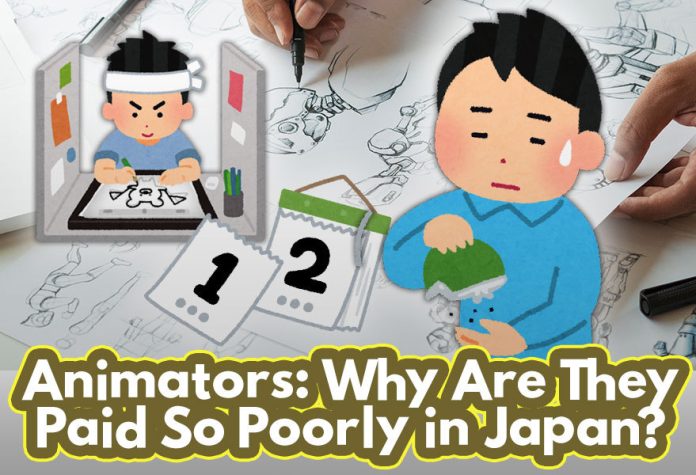
In the last few years, we saw Demon Slayer: Mugen Train become the highest-grossing animation in all Japanese film history as well as Evangelion: 3.0+1.0 Thrice Upon a Time and Jujutsu Kaisen 0 become a huge hit domestically and internationally.
A regular person might imagine that animators in the Japanese industry must be compensated well for their work.
But the reality is that such isn’t the case.

How much does an animator get paid?
Let’s look at some solid numbers. According to the report from Japan Animation Creators Association (JaniCA) from 2019, the average annual salary of an animator in Japan is about 4,400,000 yen (approximately US $30,690). According to the National Tax Agency of Japan, the average annual salary of the entire Japanese population is 4,670,000 yen (approximately US $32,581), so animators make slightly less than the national average.
But these numbers do not reflect what a newbie animator makes in the industry. In another report from JAniCA in December 2020, young animators (from age 20-24) only make about 1,550,000 yen (approximately US $10,814) annually.
As a point of reference, the average annual salary for animators in the US comes to US$71,800 which is more than double the amount in Japan. (Source: Salary Explorer)
So why are Japanese animators paid so little?
According to the creative division of Levtech, Co. Ltd (one of the larger job search platforms in Japan), the Japanese anime industry has a fundamentally flawed structure.
During the production of an animation, what is called a Production Committee consisting of companies investing in the anime project is created. The Production Committee gives the funds to an anime production studio and the studio creates the anime. However, the royalties, copyrights, and other legal rights tied to the anime project do not belong to the anime studio. Those rights go into the hands of the Production Committee, thus only allowing the animation studio to obtain little profit.
Journalist Yusuke Nakagawa of Gendai Media wrote that in the early days of Japanese anime production (going back to the 1960s), TV stations and advertising firms realized that the source of profit in anime projects was character merchandising. Once these corporations realized that fact, they started to make arrangements to obtain legal rights over the characters. It was around the same time that the tradition of giving low budgets to anime production studios started in Japan, all thanks to the greed of corporations involved in the decision-making sector of anime projects.
Nakagawa concludes that these two elements created the flawed structure of the anime industry. The anime production studios are given little funding, to begin with, and not only that, they are withheld from holding the copyrights of the anime projects and characters they create.
Additionally, the majority of animators nowadays are freelancers. Only 10% of the animator population is classified as permanent employees of anime studios. This means that there is no payment for overtime, no sick leave, or steady paychecks. Freelancing animators cannot enjoy the same benefits as permanently employed animators.
Despite the terrible working conditions that are widely known to the public nowadays, the anime industry has so many people wanting to work in it. This creates a “churn-and-burn” culture of new animators. Even if animators burn out from being overworked and underpaid, there are more than enough candidates who can fill in the gap. This circumstance incentivizes production studios to keep animator wages low since there is no need for them to consider increasing the wages when there is plenty of fish in the sea who would be happy to work for little money. (Source: Tenshoku Saito Hikaku Plus)
In times of the ongoing pandemic and the recent months of price hikes in everyday materials necessary for living in Japan, unfortunately, the future looks unfavorable for animators.
Other:
Did you know we have a catalog of FREE-TO-READ doujinshi and a collection of works available for 99 CENTS each? Check them out!

If you enjoyed this article, you can support us by buying our officially localized English Doujinshi at our Irodori Comics Store! Works are uncensored and DRM-Free for you to keep!
When you buy works on our website, up to 60% of the selling price goes directly to the artists as royalties!
Read more news articles here.










